Development of Orally Disintegrating Tablets Based on a New Excipient
The authors examine the effectiveness of an excipient comprised of mannitol, polyvinyl acetate, and crospovidone using model actives loperamide hydrogen chloride and caffeine.
There is a strong trend in the pharmaceutical industry toward developing orally disintegrating tablets because they have various benefits for the patient compared with regular tablets. These benefits include quick onset of action, ease of swallowing, and the ability to take the tablets without water (1). To achieve these benefits, highly functional excipients are required.
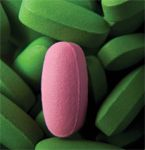
SCOTT KLEINMAN/GETTY IMAGES
Rapid dissolution, smooth mouth feeling, and excellent compressibility are three properties of fast dispersible excipients that are extremely important (see Figure 1). No single materials meet all these requirements, so Ludiflash (BASF SE, Ludwigshafen, Germany) was developed. This formulated mixture of mannitol, polyvinyl acetate, and crospovidone is a highly functional material that can be compressed directly and does not need complex and time-consuming processes such as mixer granulation, fluidized bed granulation, roller compaction, or freeze drying.

Figure 1: Property triangle of fast dispersible excipients. (ALL FIGURES ARE COURTESY OF BASF SE.)
Aim of the study
The goal of this study was to investigate how orally disintegrating tablets containing the model actives loperamide hydrogen chloride (HCL) and caffeine can be developed. The effect of additional disintegrants and the impact of compression speed and tableting force were studied applying a direct compression process.
Methods
Materials. The following materials were used in the study: a fast dispersible excipient (Ludiflash, BASF SE) based on mannitol, polyvinyl acetate, and crospovidone; loperamide HCl (Selectchemie, Zurich, Switzerland); caffeine fine powder (BASF SE); sodium stearyl fumarate (Pruv, J. Rettenmaier & Söhne GmbH + Co. KG, Rosenberg, Germany); and crospovidone (Kollidon CL-SF, BASF SE).
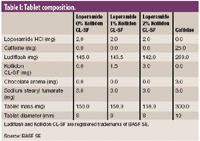
Table I: Tablet composition.
Experimental methods. Various formulations of the active ingredients and excipients were compressed into tablets (see Table I). All ingredients were blended in a Turbula blender (Bachofen, Uster, Switzerland) for 10 min and tableted on a rotary press (Korsch PH 106, Korsch AG, Berlin, Germany) into flat tablets of 8 mm (loperamide HCl), respectively, 10 mm diameter (caffeine) with a bevelled edge. The relative humidity (r. h.) inside the tablet press was adjusted < 20% r.h. The tableting speed was varied from 20 to 60 rpm and compression force from 1 to 16 kN.
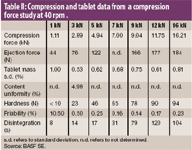
Table II: Compression and tablet data from a compression force study at 40 rpm .
Results
The direct compression process was applicable to both model drugs with good results. The compression force study revealed that for loperamide HCl tablets, 3–5 kN (60–110 MPa) should be applied because in this range disintegrating tablets of sufficient hardness and low friability could be manufactured. A higher tableting pressure strongly reduces the porosity of the tablets and results in longer disintegration times (see Table II, Figures 2 and 3).
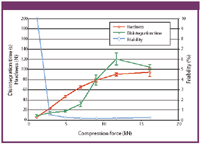
Figure 2: Hardness, friability, and disintegration as a function of compressed force using loperamide tablets with 0% Kollidon CLSF. Kollidon CL-SF is a registered trademark of BASF SE. (ALL FIGURES ARE COURTESY OF BASF SE.)
The hardness of loperamide HCl tablets was slightly reduced by increasing the tableting speed from 20 to 60 rpm, but disintegration time remained constant (see Figure 4).
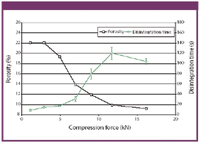
Figure 3: Porosity and disintegration as a function of compression force using loperamide tablets with 0% Kollidon CL-SF. Kollidon CL-SF is a registered trademark of BASF SE. (ALL FIGURES ARE COURTESY OF BASF SE.)
As expected, the disintegration times can be further shortened by the addition of Kollidon CL-SF (1% and 2%), which is accompanied by a tendency toward higher hardness and lower friability. With these formulations, tableting pressures can be increased to 140 MPa without a negative impact on disintegration (see Figure 5).
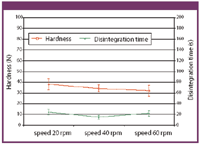
Figure 4: Hardness and disintegration as a function of tableting speed using loperamide tablets with 0% Kollidon CL-SF. Kollidon CL-SF is a registered trademark of BASF SE. (ALL FIGURES ARE COURTESY OF BASF SE.)
Surprisingly, even the low-dosed loperamide HCl tablets exhibited an acceptable standard deviation of content (4.98%) and mass (0.53–0.81%), which may be caused by formation of interacting mixtures. There was 94.7% dissolution after 30 min for the loperamide HCl tablets with 1% Kollidon CL-SF.
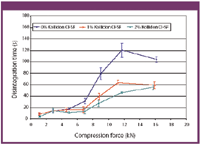
Figure 5: Impact of additional Kollidon CL-SF on disintegration of loperamide tablets. Kollidon CL-SF is a registered trademark of BASF SE. (ALL FIGURES ARE COURTESY OF BASF SE.)
Caffeine tablets gave similar results: 5.48% content uniformity, 0.98% mass variation, 100.6% dissolution after 10 min (see Table III).
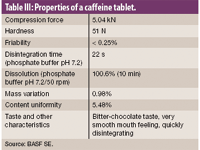
Table III: Properties of a caffeine tablet.
The addition of particular flavors such as chocolate improved the taste of the tablets significantly. Further tests with magnesium stearate instead of sodium stearyl fumarate showed that significantly longer disintegration times were recorded caused by the known lipophilizing effect of this compound (2).
Conclusion
Loperamide and caffeine orally dispersible tablets based on Ludiflash can be manufactured easily via a direct compression process. Optimal tableting pressure was found to be 60–10 MPa because this results in rapidly disintegrating, mechanically stable tablets. Addition of small amounts of Kollidon CL-SF further shortened disintegration times and allowed even higher tableting pressures (60–140 MPa). Tablet characteristics are only slightly influenced by compression speed.
S. Kruse is a laboratory expert, S. Gebert is a pharmaceutical engineer, K. Meyer-Böhm is a research and development (R&D) manager, A. Maschke, PhD, is a R&D manager, and K. Kolter*, PhD, is head of R&D for pharmaceutical excipients, BASF SE, G-EMP-MD-H201, Ludwigshafen, Germany, 67056, tel. + 49 621 6041664, fax; 49 621 6097370, karl.kolter@basf.com
*To whom all correspondence should be addressed.
Submitted: Apr. 16, 2008; Accepted: Apr.24, 2008.
What would you do differently? Email your thoughts about this paper to ptweb@advanstar.com and we may post them to the site.

References
1. R. Bohnacker et al., "Determination of the Disintegration Time of Mouth Melt Tablets with Texture Analyzer Method," Pharm. Ind. 67 (3), 327–35 (2005).
2. S. Rizk et al., "Influence of Lubricant Properties on Compression Behavior and Drug Dissolution Rate of Scleroglucan Hydrophilic Matrix," Int. J. Pharm. 126 (1–2), 57–63 (1995).

Pharmaceutical Tariffs Are Imminent: How Industry is Bracing for Impact
April 16th 2025On April 14, 2025, the Trump Administration launched a national security-driven investigation into pharmaceuticals, a move that will likely result in tariffs being placed on pharmaceutical drugs, ingredients, and other components that are imported from outside of the United States.
Drug Solutions Podcast: A Closer Look at mRNA in Oncology and Vaccines
April 30th 2024In this episode fo the Drug Solutions Podcast, etherna’s vice-president of Technology and Innovation, Stefaan De Koker, discusses the merits and challenges of using mRNA as the foundation for therapeutics in oncology as well as for vaccines.